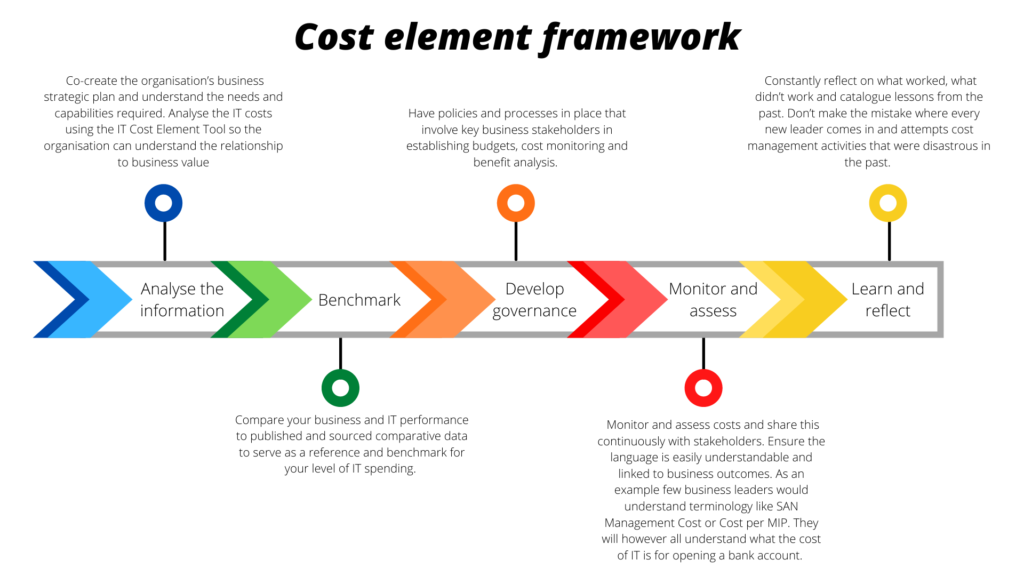One of the main reasons CIOs get fired is their inability to manage IT costs. Again, doing it too well is also a problem as cost-cutting might throttle growth for years to come. Cost management is a bit like walking a tightrope with no net.
As an example of this, a large corporation decided to invest in a system remediation strategy and decided to go big and replace all their ageing technology. This was a massively complex undertaking. Large projects by their very nature have the tendency to overrun their constraints not by small margins but by order of magnitudes. A project that should take 3 years suddenly ballooned into a 10-year undertaking. This happened in our example and the project overran and caused many financial issues not only for IT but for the organisation at large. Large projects like this are normally amortized and it creates debt for future leadership teams. Cost to income ratios shoot up and the investment community become antsy, which in turn has a direct impact on the organisation's share price.
Contrast this with a company that cut their costs to the bone to make them ready for a merger with a larger organisation. Their cost to income ratio dropped significantly and they were seen as a very attractive and lean running outfit. Unfortunately, their lack of investment caught up with them and their competitors overtook them with better digital products. They started losing market share and heads began to roll. As the development of new IT heavy products takes a long time, they were lagging their competitors for years to come.
Even the above-mentioned examples are an oversimplification. If, and only if, an investment into IT is effective and targeted, heavy investment in IT will lead to a long term reduction in IT spending and improve operating ratios. Also, many a time a reduction in IT spend does not lead to a reduction in operating ratios and underinvestment will in the long term not lead to an improvement in operating ratios.
Cost management should be treated as a holistic undertaking taking into account all the different IT costs of an organisation. These costs should be considered beyond the initial investment and traditional bookkeeping. All costs of a certain IT object (facility, system or component) over the entire life cycle of this object should be considered to create an approach that is not generalised and that promotes business/IT alignment.
Don't make the mistake of focusing on IT cost for the sake of IT cost. IT spending should drive business outcomes. Try and relate IT cost to the corresponding business processes and make this visible to stakeholders. For example, what is the cost of opening an account and how much of that business process does IT contribute to?
Look at IT costs holistically by combining all the elements of cost management and control. For example, if you cut costs, adjust charge-outs and see how your benchmarking stacks up against peer groups. If you run a new project did you include all the costs for maintaining the system and decommissioning older systems?
A good place to start for cost management is understanding all the elements that make up overall costs. Use the cost element framework below as a starting point to unpack what makes up the cost of IT and try and understand the interplay between these elements.

Use the IT Cost Element tool and follow the following steps to manage cost better:
- Analyse the information: Co-create the organisation's business strategic plan and understand the needs and capabilities required. Analyse the IT costs using the IT Cost Element Tool so the organisation can understand the relationship to business value.
- Benchmark: Compare your business and IT performance to published and sourced comparative data to serve as a reference and benchmark for your level of IT spending.
- Develop governance: Have policies and processes in place that involve key business stakeholders in establishing budgets, cost monitoring and benefit analysis.
- Monitor and assess: Monitor and assess costs and share this continuously with stakeholders. Ensure the language is easily understandable and linked to business outcomes. As an example, few business leaders would understand terminology like SAN Management Cost or Cost per MIP. They will however all understand what the cost of IT is for opening a bank account.
- Learn and reflect: Constantly reflect on what worked, what didn't work and catalogue lessons from the past. Don't make the mistake where every new leader comes in and attempts cost management activities that were disastrous in the past.

Managing costs well is a great opportunity to show business value. Great CIOs understand that cost management is not only an accounting tool but an opportunity for business leaders to understand how IT costs contribute to business value and overall organisational success. Doing this well will help IT to shift from being just viewed as a cost centre but rather as a partner that enables strategic goals. Use the involvement of business leaders and other stakeholders as a masterstroke to demonstrate the value of IT.
Further reading
Van Maanen, Henno, and Egon Berghout. "Cost management of IT beyond cost of ownership models: a state of the art overview of the Dutch financial services industry." Evaluation and Program Planning 25.2 (2002): 167-173.
Back to the Table of Contents of our Techno Fluency book